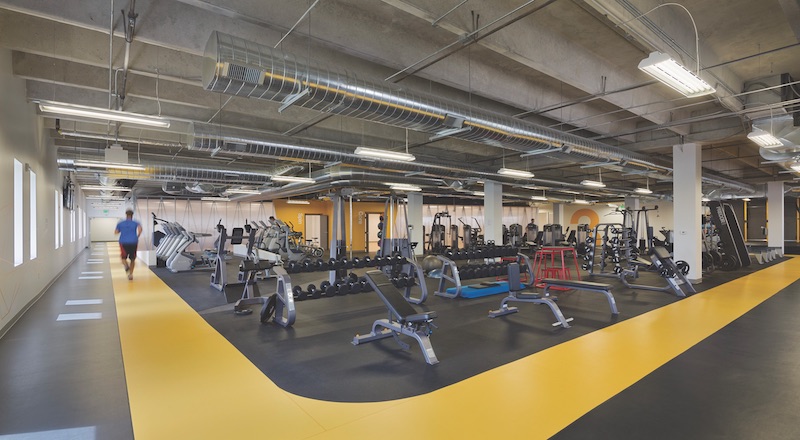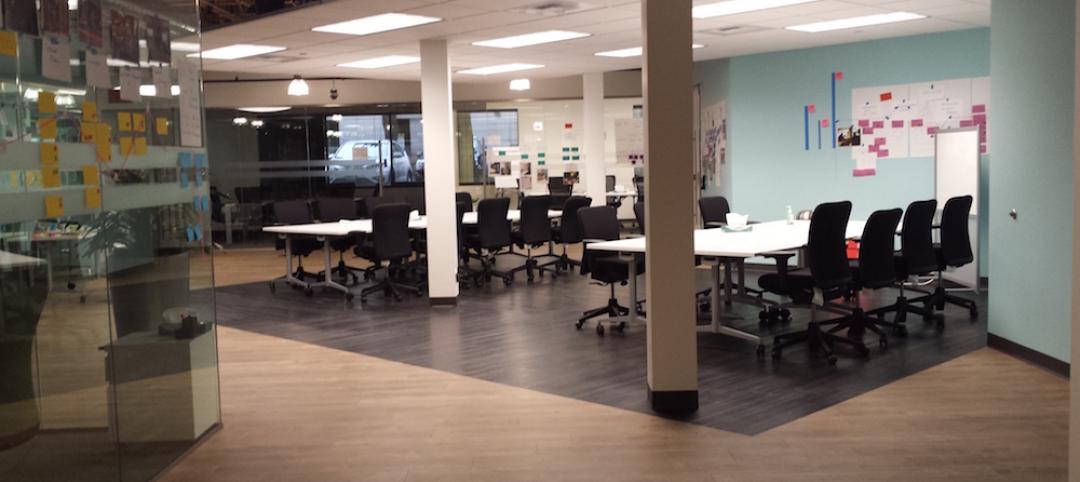Five years ago, 3form, a materials manufacturer, did a top-to-bottom remodel of its Salt Lake City headquarters campus that included adding a 14,500-sf gym, which was built with the company’s sustainable building products.
3form also instituted a policy that employees who used the gym and complied with certain health metrics would qualify for discounts on their monthly payroll contributions for healthcare coverage. In December 2018, 3form had saved so much money on healthcare costs as a result of this program that it was able to offer its employers free coverage for that month.
The savings equaled 8.3% of the workers’ gross pay in December.
Talley Goodson and Wynn Clayton, 3form’s CEO and CFO, “saw that something was happening on the horizon” about increasing healthcare costs when they approved the investment for the gym, says Christian Darby, the company’s Vice President of Design and Marketing. They took a “holistic approach” whose goal was to improve the overall health of 3form’s workforce, while controlling healthcare costs.
As of December the company employed 382 people and had a total of 909 covered under its healthcare plan. Family members can use the gym, which offers 24/7 access. The facility has eight contracted personal trainers whose jobs include evaluating the gym’s equipment each year for functionality and usage.
Beyond the gym, 3form provides its workers with an onsite doctors’ office for medical appointments, as well as blood tests and prescription refills. Services include follow-up care and counseling in the office or via telephone.
Darby says 3form has had the same healthcare provider for the past four years and into 2019. The company raised its employees’ payroll deduction for healthcare by only 3% in 2018—compared to the national average of 10-12%—and is not increasing that deduction for coverage in 2019.
Darby says participating employees are required to check in with the company’s clinic four times a year, during which 3form’s medical staff might suggest health “opportunities” for employees or their family members to pursue.
To get the discounts on premiums, employees must participate in a Health Risk Assessment to see if they fall outside of established standards for cholesterol, body mass, diabetes, asthma, hypertension, health of mind, eating habits, stress level, or tobacco use. If so, they enter a program and engage in a process that can include taking prescribed medicine or meeting with medical professionals.
In Darby’s case, the med staff found that his cholesterol was “a tad high,” he says, and established targets and a strategy to help lower it.
Related Stories
Office Buildings | Jul 12, 2016
CF Møller designs LEGO world headquarters complex in Denmark
The 52,000-sm complex will incorporate many familiar motifs from the popular plastic building block toys.
Office Buildings | Jul 11, 2016
CetraRuddy designs office tower for Manhattan’s Meatpacking district
Plans originally called for a hotel, but the architect and developers adapted their design for commercial use.
Market Data | Jul 6, 2016
A thriving economy and influx of businesses spur construction in downtown Seattle
Development investment is twice what it was five years ago.
Contractors | Jul 4, 2016
A new report links infrastructure investment to commercial real estate expansion
Competitiveness and economic development are at stake for cities, says Transwestern.
High-rise Construction | Jun 29, 2016
Best Tall Buildings around the world favor unusual shapes and hybrid functions
The Council on Tall Buildings and Urban Habitat selects winners in four regions.
Office Buildings | Jun 16, 2016
Ability to focus, not perks, is top concern for office employees
Open-plan offices found to worsen distraction problem.
High-rise Construction | Jun 15, 2016
WilkinsonEyre designs diamond-patterned Bay Park Centre for Toronto
A sloping plaza with trees, grass, and gardens connects the two downtown towers.
Office Buildings | Jun 14, 2016
Let's not forget introverts when it comes to workplace design
Recent design trends favor extroverts who enjoy collaboration. HDR's Lynn Mignola says that designers need to accommodate introverts, people who recharge with solitude, as well.
Movers+Shapers | Jun 13, 2016
THE DISRUPTORS: The Millennial generation is imposing its will on design
AEC firms, particularly those that design hotels and offices, gain a competitive edge by knowing how to appeal to the largest share of the American workforce.
Office Buildings | Jun 10, 2016
Buildings that invest in wellbeing see healthy returns
Healthy workers are more productive workers, but fitness can be tough when employees at the office for 50 hours a week. Perkins+Will's Janine Grossmann offers the wellness components that landlords and companies should prioritize.
















